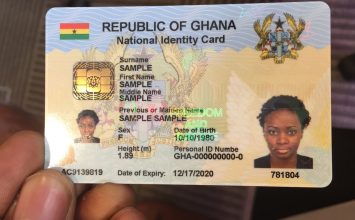Ghana Card versus India Aadhaar, the differences you must know
 The national identification card, otherwise known as Ghana Card, has sparked controversy in the past few weeks regarding the cost, reasons for failure to roll out on scheduled date.
The national identification card, otherwise known as Ghana Card, has sparked controversy in the past few weeks regarding the cost, reasons for failure to roll out on scheduled date.
The controversy was also over the financial benefit it would accrue to the state.
A section of the public pitched the Ghana Card against the Indian Card, otherwise known as Aadhaar, arguing that the National Identification Authority (NIA) could issue the ID cards at reduced cost.
In view of the ongoing debate on the card, the Public Affairs Directorate of the NIA, the institution mandated to issue the Ghana Card, has therefore, provided details of the differences between the Ghana Card and that of the India Aadhaar.
This is contained in a statement issued by the NIA and copied to the Ghana News Agency in Accra.
It said the Ghana Card is a self-sustaining one with revenue modules and statutory fees, which is funded by the government only for the first year, and that when the project becomes viable; it is expected to accrue minimum revenue of one billion dollars to the government in the next 15 years.
On the other hand, the India card is funded by the Indian government yearly, which is fully funded by the taxpayer.
The Indian government saved $19 million between 2015 and 2016, but does not rake-in any revenue to the government.
Additionally, the Ghana Card would be used as a national identity card and replace multiple ID cards in the system and confers citizenship on holders. It would be used as passport within the Economic Community of West African States (ECOWAS).
It is mandatory for public and private usage for business transactions, which is expected to advance social, economic and political activities in the country.
On the contrary, the Indian Aadhaar is not a national ID, and does not use it as identity documents. It is used only in India and does not have a chip and storage capacity. It is printed on paper although it has a PIN number,
Again, the Indian card does not confer citizenship on holders and not intended to replace existing ID cards.
More so, the Ghana Card has PIN number with chip embedded in it, 148 kilobyte capacity, with Data Protection Complaint, Act 843.
However, the Indian Card has no chip, no storage capacity, suffers breaches with PKI, and with no data protection laws in place and mostly printed on paper.
Source: GNA
